Regulatory roles for NKT cell ligands in environmentally induced autoimmunity
- PMID: 18981095
- PMCID: PMC3647253
- DOI: 10.4049/jimmunol.181.10.6779
Regulatory roles for NKT cell ligands in environmentally induced autoimmunity
Abstract
The development of autoimmune diseases is frequently linked to exposure to environmental factors such as chemicals, drugs, or infections. In the experimental model of metal-induced autoimmunity, administration of subtoxic doses of mercury (a common environmental pollutant) to genetically susceptible mice induces an autoimmune syndrome with rapid anti-nucleolar Ab production and immune system activation. Regulatory components of the innate immune system such as NKT cells and TLRs can also modulate the autoimmune process. We examined the interplay among environmental chemicals and NKT cells in the regulation of autoimmunity. Additionally, we studied NKT and TLR ligands in a tolerance model in which preadministration of a low dose of mercury in the steady state renders animals tolerant to metal-induced autoimmunity. We also studied the effect of Sphingomonas capsulata, a bacterial strain that carries both NKT cell and TLR ligands, on metal-induced autoimmunity. Overall, NKT cell activation by synthetic ligands enhanced the manifestations of metal-induced autoimmunity. Exposure to S. capsulata exacerbated autoimmunity elicited by mercury. Although the synthetic NKT cell ligands that we used are reportedly similar in their ability to activate NKT cells, they displayed pronounced differences when coinjected with environmental agents or TLR ligands. Individual NKT ligands differed in their ability to prevent or break tolerance induced by low-dose mercury treatment. Likewise, different NKT ligands either dramatically potentiated or inhibited the ability of TLR9 agonistic oligonucleotides to disrupt tolerance to mercury. Our data suggest that these differences could be mediated by the modification of cytokine profiles and regulatory T cell numbers.
Conflict of interest statement
Disclosures
The authors have no financial conflict of interest.
Figures

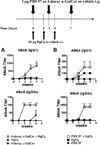



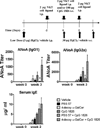
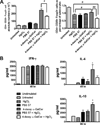
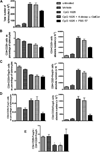

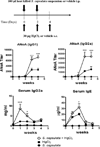
References
-
- Lawrence DA, McCabe MJ., Jr. Immunomodulation by metals. Int. Immunopharmacol. 2002;2:293–302. - PubMed
-
- Enestrom S, Hultman P. Does amalgam affect the immune system? A controversial issue. Int. Arch. Allergy Immunol. 1995;106:180–203. - PubMed
-
- Goyer RA. Environmentally related diseases of the urinary tract. Med. Clin. N. Am. 1990;74:377–389. - PubMed
-
- Moszczynski P, Slowinski S, Rutkowski J, Bem S, Jakus-Stoga D. Lymphocytes, T and NK cells, in men occupationally exposed to mercury vapours. Int. J. Occup. Med. Environ. Health. 1995;8:49–56. - PubMed
Publication types
MeSH terms
Substances
Grants and funding
LinkOut - more resources
Full Text Sources
Other Literature Sources

